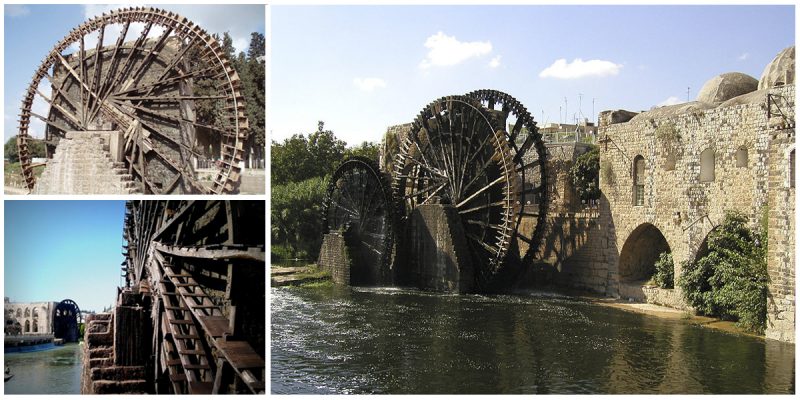The ancient city of Hama, also known as “the city of wheels,” is the fourth largest city in Syria after Aleppo, Damascus, and Homs, and dates to the early Iron Age. It is on the edge of a settlement area facing the Syrian Desert, and during the Assyrian, Roman, and Byzantine eras the city became an important agricultural and economic center. It was also the time of many of these water wheels. Built on the banks of the Orontes River, the norias (“wheels of pots”) became a symbol of the city itself and are part of an ancient irrigation system. They were built to carry water into the city and were expanded on and enhanced over several centuries.
It is not clear when the first water wheels were built. It is believed that their origins generally date to the Arab medieval era, but a mosaic was found in the ancient city of Apamea, not far from Hama, which dates to 469 B.C. and depicts a noria very similar to those at Hama, suggesting that these gigantic wheels existed long before that time.
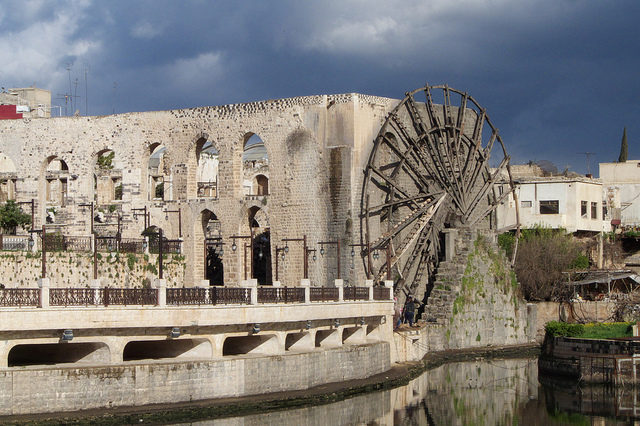
The water wheels are unique both in their size and age. On average, the Hama water wheels’ diameter reaches up to 70 feet. These large wooden wheels were called “the most splendid norias ever constructed” and only 17 of the original ancient hydraulic structures remain.
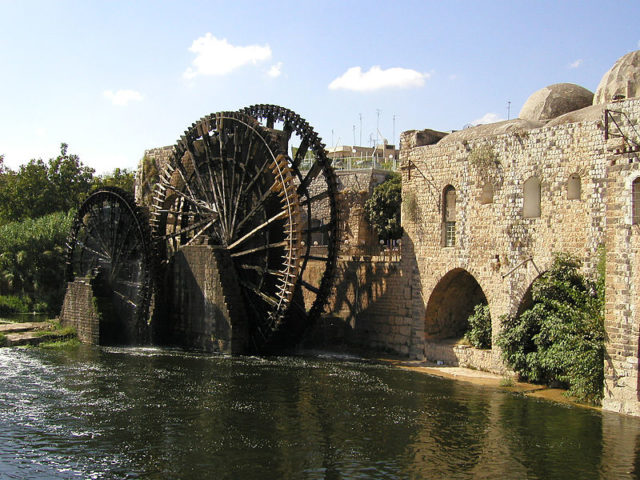
The Norias of Hama visible today date mostly from the Ayyubid dynasty which ruled large parts of the Middle East during the 12th and 13th centuries. Over time, they were rebuilt or reconditioned, especially during the Mameluke and Ottoman periods.
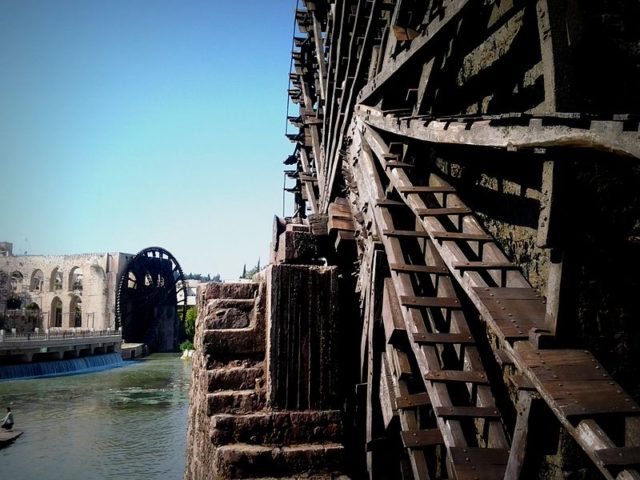
The wheels were powered by the current of the flowing river. Through the force of gravity, wooden buckets on the wheels picked up water from the river and emptied it into series of aqueducts that distributed the water to various areas, such as households or farms, being used in the irrigation of nearby gardens and agricultural fields.
Most aqueducts in Hama are simple and long rows of arches that are lower than the wheels, so that the water pours easily into them. Today they provide a purely aesthetic purpose as only small sections of the aqueduct systems remain.
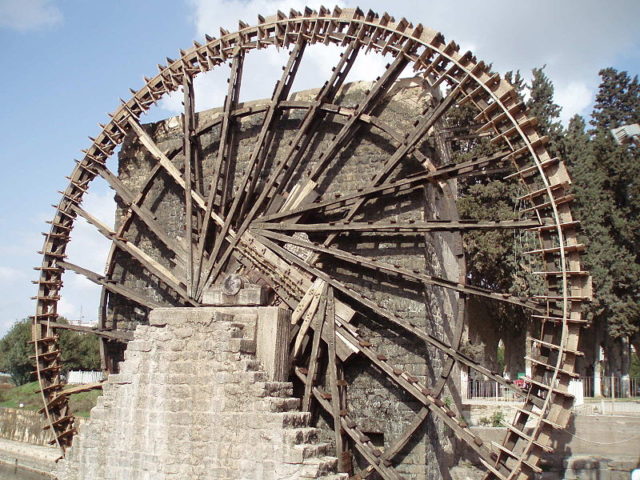
Each of these magnificently engineered wheels has its own name, and the biggest and most famous is known as Noria al-Muhammadia. It is considered to be one of the largest water wheels ever constructed. Measuring 66 feet in diameter and dating back to 1361 AD (as seen in the inscription on its pillar), the wheel was designed to supply water to Hama’s Grand Mosque and the Hammam of Dahab via an aqueduct with 32 arches. It remains a lasting testimony to the engineering skill of the ancient Arab world.
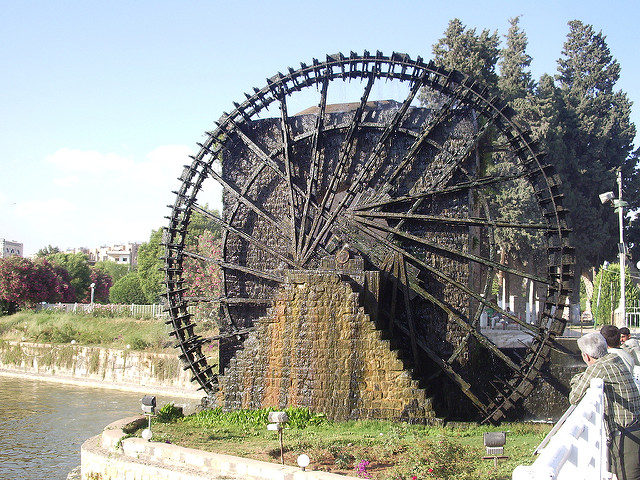
In 1987, a program of restoration began as part of Syria’s project to protect its architectural heritage and in 1999, Syria submitted the Norias of Hama to the Tentative World Heritage List.
Today, the wheels are mostly unused but continue to function as tourist attractions.
